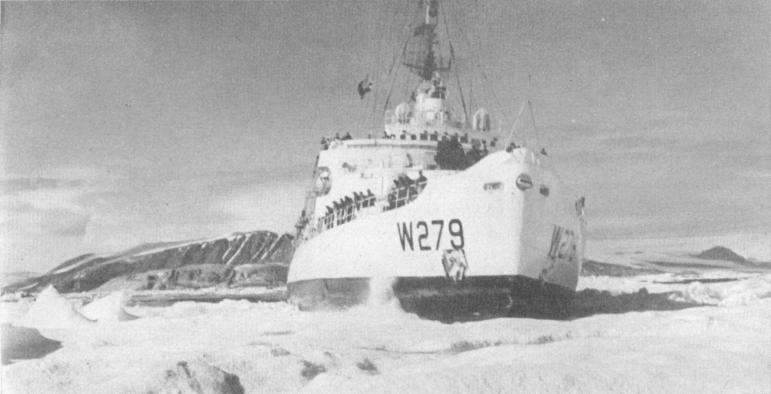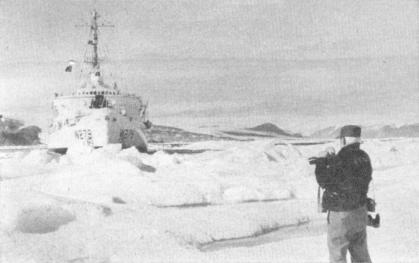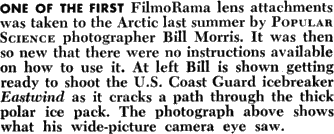

"With FilmoRama you get a picture almost three times as wide as it is high. Vistascope gives you 50 percent more
horizontal coverage. You'll need a wide projection screen, of course, but it doesn't have to be curved."
"Sounds like the stuff all right," said my friend. "What's the price tag?"
"Depends on which one you want. The
FilmoRama wide-screen lens attachment is $596. Then you need special mounting brackets, one for your camera and
another for your projector. Also, you must have a special wide-field view finder. That adds up to a $760 package."
"What about that other one?"
"Vistascope. Well, there aren't any special mounting brackets. You just use a standard
sunshade-adapter ring. And, right now, there is no wide-field view finder for it-you sort of by-guess and by-gosh."

"I gather that the price is lower?"
"It's cheaper. yes. The 16-mm. job is $125 and the 8-mm. one $75. Anyway, those are the prices that I got from the people who import them - J. L. Galef and Sons in New York, down at 85 Chambers Street."
"That does give me a choice. But say, do these wide-screen home movies really work? Have you seen any of it?"
New Systems Give Sense of Depth
"Both systems," I told him. "Not only do you get wide pictures on the screen, but
you actually get a sense of three dimensions. Let me give you an instance. When Bill Morris, the chief photographer
of POPULAR SCIENCE, and I were up in the Arctic last summer, he took along a FilmoRama lens attachment for his Bell
& Howell 16-mm. movie camera.
"We were showing the film at the office the other day. When we came to a sequence taken from the bridge of an
icebreaker pitching in heavy seas off Greenland, one of the guys asked if there was a Dramamine tablet in the
house. He was getting seasick."












